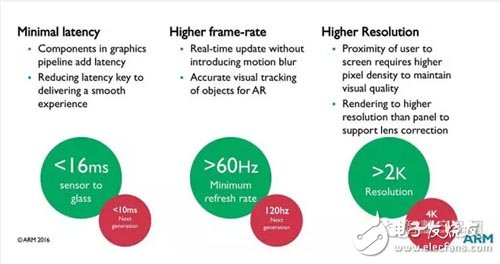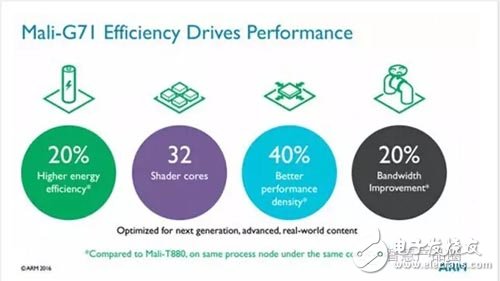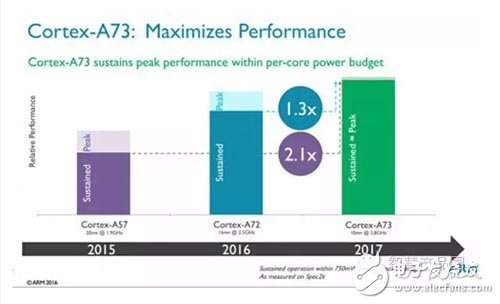The first year of VR can be said to be everywhere. After experiencing the “washing†of the market, the participants of each exhibition will gradually transition from emotional to rational, and constantly upgrade and rebuild the value of the ultimate “experienceâ€.
Anand Patel, Graphics Processor Product Manager, ARM Multimedia Processor Division, believes that the VR market is a new opportunity for the entire industry chain, whether it is chip vendors, hardware vendors, suppliers, content providers, etc. will have their own opportunities, but from the bottom In terms of technology, the way to optimize VR for smartphones and tablet SoCs is not a long-term solution, and new IP support is urgently needed to enhance the experience.
Build from the system level
The upgrade of the experience is the key to the popularity of VR. "Because VR applications have high performance requirements, they require a lot of computing power and graphics performance. They can't rely solely on the GPU and CPU cores. They also need support from sensors and video codecs, and need to support higher resolution." Anand Patel pointed out that "therefore, we should look at and utilize the characteristics of different IP cores from a system level to achieve a system-wide computing solution and achieve high experience goals."

Anand Patel further mentioned, "A good VR experience, the total delay is controlled at 16 milliseconds, while the next generation demand is below 10 milliseconds, where the graphics processing delay is within 4 milliseconds. The image refresh rate is from the current 60 The Hz reaches 120Hz and the screen resolution will reach 4K from 1080P."
"Thus, at the system level, we should pay attention to the GPU multi-core scalable design to support different VR computing requirements. Second, expand the API interface to reduce latency. Third, provide full-screen anti-aliasing or full-screen anti-aliasing to better enhance the experience. Fourth, the need to introduce frame buffer compression (AFBC) technology into video IP can improve performance while saving 50% bandwidth and reducing power consumption," concluded Anand Patel.
Although ARM regularly updates its chip architecture every year, but returning to VR for the first year, upgrading support for VR has become the architectural design concept of ARM's new mobile chip. ARM's new CPU core Cortex-A73 and GPU core Mali-G71 both enhance the support for mobile VR. Not only the chip designed and manufactured based on the corresponding architecture is expected to be used in the flagship models launched by major smartphone manufacturers in 2017. At the same time, it is also suitable for mobile VR devices. “Double insurance†means that the mobile VR experience will go up to a new level in parallel.
What kind of strong IP is needed?
We know that the GPU's capabilities and supporting depth algorithms are the key factors in determining the VR experience. It determines whether it can meet the key VR indicators of latency and screen refresh rate.
ARM introduced the new generation of image processing engine Mali-G71, becoming the first GPU to use the ARM third-generation architecture Bifrost. Peter Greenhalgh, technical director and researcher at ARM Processors, said that the Cortex-A73 has been optimized on the microarchitecture and has been highly enhanced in transmit queues and balance algorithms. Compared to the previous high-end Mali-T880 series, Mali-G71 graphics performance increased by 50%, power efficiency increased by 20%, external memory bandwidth can be saved by 20%. At the same time, the configuration is flexible, up to 32. For VR devices with high graphics performance requirements, more cores can be configured.

The CPU is also moving toward supporting more complex processing operations, better rendering, and lower power requirements. With such a set of comparison figures, the new CPU core Cortex-A73 has a 30% improvement in performance and a 30% performance improvement over the previous Cortex-A72. In addition, the A73 supports the big-LITTLE architecture and can be combined with the A53 and A35 cores. Compared with the eight-core A53, the A73 dual-core A53 quad-core can increase the multi-core performance by 30%, and the single-thread performance can be improved by 90%. “It can be said that the A73's significant advantages are high performance, low power consumption, and small area. These advantages make the A73 very suitable for VR equipment.†Peter Greenhalgh pointed out.

The video processor and display processor are also the core guarantee for smooth running of VR/AR. In addition to CPUs and GPUs, the ARM Mali multimedia IP portfolio has also developed a new generation of video processors and display processors. The Mali-V550 is the world's first single-chip single core that can simultaneously support H.265 HEVC format video codec. The single core can support up to 1080p/60fps. For example, stacking eight cores can support 4K/120fps. Its display processor "Mali-DP650" with ARM CoreLink MMU-500 system bus, supports a variety of display resolution, but also easily supports 3840&TImes; 2160 4K resolution and 60fps frame rate. Peter Greenhalgh claims that the Mali Multimedia IP portfolio supports Adaptive Scalable Texture Compression (ASTC) and Frame Buffer Compression (AFBC), which dramatically reduces system bandwidth requirements by nearly 50% for VR devices and completes across multiple cores. Performance adjustments provide high image quality and energy savings.
Diesel Engine Parts Woodruff Key,Key Plain Woodruff,Offset Woodruff Key,Carbon Steel Woodruff Keys
Chongqing LDJM Engine Parts Center , https://www.ckcummins.com
